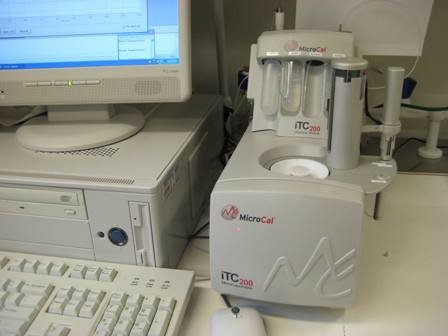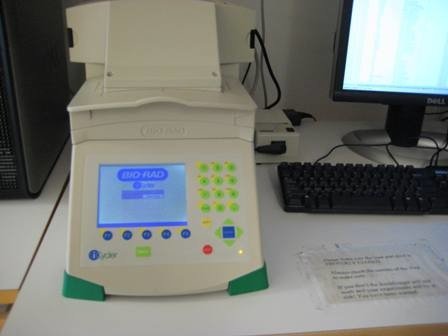PSF Biophysical Protein Characterization Platform
The PSF biophysics platform currently consists of four technologies: Isothermal titration calorimetry (ITC), Thermal melt assay using the BioRad CFX-96 (Thermofluor), Thermal aggregation assay using the StarGazer 384, and Circular dichroism spectrometer (CD). Our setup is available for academic and external users after proper user training and the signing of a User Agreement Form.
Contact for User Agreement Form
Tomas Nyman
Researcher
Isothermal titration calorimetry
ITC is a thermodynamic technique that directly measures the heat released or absorbed during a biomolecular binding event. The technique allows simultaneous determination of all binding parameters in a single experiment ITC (n, K, ∆H and ΔS). It directly measures sub-millimolar to nanomolar binding constants. The sample cell is 200 µL and as little as 10 µg of protein can be used. The iTC200 system is the most sensitive isothermal titration calorimeter available. Examples of applications are:
- Characterization of molecular interactions of small molecules, proteins, antibodies, nucleic acids, lipids and other biomolecules
- Lead optimization
- Enzyme kinetics
- Assessment of biological activity

Thermofluor
This assay is a fluorescence-based thermal stability assay monitoring temperature-dependent protein unfolding.
The assay utilizes the fact that certain fluorophores alters their fluorescence depending on hydrophilic and hydrophobic environments. This provides a means to distinguish between folded and unfolded protein. In an ideal case, at low temperature no fluorescence signal is observed because the protein is properly folded and no hydrophobic surface patches are present. With increasing temperature the protein starts to melt, thereby exposing hydrophobic areas, which can interact with the fluorophore thus giving rise to a fluorescence signal. The resultant curve is used to determine the melting temperature Tm of the protein. Conditions and components which cause an increase in the melting temperature of the protein are therefore stabilizing the protein. The assay is run in 96-well plates, facilitating parallel screening of conditions or compounds. Examples of applications are:
- Determination of melting temperature
- Qualitative assessment of ligand interaction
- Drug screening, buffer screening

Thermal aggregation assay
StarGazer-384 is a platereader designed to study the thermal stability of proteins. Using differential static light scattering this instrument measures the amount of aggregated protein in a 384-well plate as a function of rising temperature. The software automatically generates thermal-aggregation curves for all samples and computes the Taggrepresenting each curve. In general, the binding of a ligand or drug to a protein stabilizes its structure and thereby increases its thermal stability. This thermal-aggregation assay can be used for the following applications:
- HTS of compound libraries
- Validation of HTS hits
- Buffer optimization
- Identification of ligands for protein crystallization
- Characterization of membrane proteins
- Comparison of stability of different constructs of a given protein

Circular dichroism spectroscopy
The presence of protein secondary structure can be determined by CD spectroscopy in the far-UV spectral region (190-250 nm). At these wavelengths the chromophore is the peptide bond, and the signal arises when it is located in a regular, folded environment. Alpha-helical, beta-sheet, and random coil structures each gives rise to a characteristic shape and magnitude of CD spectrum. The approximate fraction of each secondary structure type present in a protein solution can thus be determined by analyzing its far-UV CD spectrum. Examples of application are:
- Determining whether a protein is folded, and estimating its secondary structure content
- Studying the conformational stability of a protein under different conditions (thermal stability, pH stability, and stability to denaturants) and how this stability is altered by buffer composition or addition of stabilizing agents such as ligands or drugs.
- Determining whether protein-protein and protein-ligand interactions alter the conformation of protein.
- Comparing structures for different mutants of the same protein.
